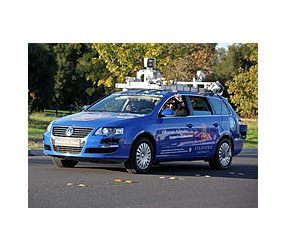Can we stop with all the hype about self-driving cars? Yes, they’re on the way, but not in the new year. Autonomous vehicles will indeed be part of the transportation landscape in the near future, but it will take decades to develop the infrastructure necessary to get these technologies in place. The more immediate applications for autonomous vehicles will be in freight management and delivery. Given how the volume of packages overwhelmed both UPS and FedEx this past holiday season, you can expect to see an autonomous truck coming soon to a driveway near you, though likely not this year.
What will become closer to the norm in 2017 is ride sharing. For the past several years, city-dwellers of all ages have been using Uber and Lyft to get around. Many of the younger ones don’t own cars and don’t plan to. Ride sharing has now found its way to midsize cities and towns. This means city planners across the nation will have to rethink traffic flows, taxi stands and projections for parking spaces and ramps.
These “right now” services are not only changing the way we get around but also the way our businesses work. “Uberization” has become part of our vocabulary. It means using technology to connect a loose federation of free agents to provide just-in-time services. Uberization is creating diseconomies of scale because the network connects seekers and solvers without all the overhead. Bigger is no longer better. It’s pure capitalism with all of its advantages and disadvantages. When everyone has to compete for everything, everywhere, every day, products and services are cheaper. But that’s at the expense of stable jobs and steady wages.
Some new innovations will have to address basic needs like water and food. Here in the Great Lakes Basin, the management and protection of water will become an increasingly contentious issue as commercial interests like Nestle are allowed to extract increasing amounts of water from our lakes and watersheds, while at the same time, the aging infrastructure of our cities is making it more difficult to deliver safe water to residents. Given our location amid 90% of all the surface fresh water in the United States, and our responsibility as stewards of this natural resource, significant investments in water infrastructure must happen. This will be an opportunity to develop and implement innovative technologies to replace those currently in use, many of which are typically half a century old.
Finally, there are a number of global issues on the horizon that will warrant and attract innovations. For example, the distinction between fake and authentic news will continue to be a contentious issue. It’s doubtful anything substantive can be done through legislation or education. So, look for apps that help you distinguish between facts and opinions. While these may technically function properly, it’s unlikely that they’ll have any real effect. Perhaps it’s just human nature that we are attracted to whatever confirms our biases, and repelled by anything that casts doubt on them.
Other trends that will have direct influence on American innovation include the decreasing growth rates in China, the overheated stock market, and how our new nationalism affects our ability to attract and retain world-class talent. We still need places to sell our new solutions, money to finance them, and bright and creative people to develop them. Some things never change.
Here’s hoping 2017 will be our most innovative year ever.
Jeff DeGraff is the Dean of Innovation: professor, author, speaker and advisor to hundreds of the top organizations in the world. Connect with Jeff on Twitter @JeffDeGraff.
This article was originally published on The Next Idea
